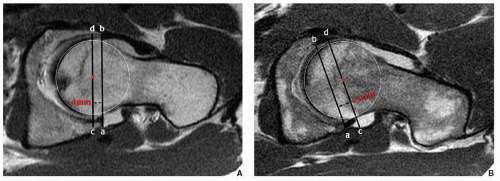ESSR planes for Hip MRI

Text & media



What each plane is used for?
|
Axial:
|
(Courtesy:www.minclinic.ru)
|
|
Sagittal:
|
|
|
Coronal:
|
|
|
Axial Oblique
|
(Courtesy: www.radsource.us)
|
|
Coronal Oblique
|
(Courtesy: clinicalgate.com) |
Text & media
SEQUENCES |
USES:
|
T1W |
|
PDW |
|
Fat Suppressed T2 or PD |
|
Arthrograms |
|
Text & media
Bone and Joint. |
Soft Tissues |
|
|
Standard MR Report
And diagnostic Algorithm
|
D. STANDARD REPORTS
|
MRI HIP
FINDINGS:
- Preserved hip joint spaces bilaterally. Preserved chondral surfaces.
- No fracture or dislocation. Normal femoral head coverage.
- No evidence of avascular necrosis.
- Unremarkable sacroiliac joints.
- Unremarkable periarticular muscles and soft tissues.
- Normal abductor tendons. No trochanteric bursitis.
- No focal marrow abnormality.
IMPRESSION:
Normal MRI of the hip joints.
MRI THIGH
FINDINGS:
- Normal left hip joint and left femoral head with no evidence of AVN.
- Preserved muscle bulk and architecture with no focal tear.
- No myofascial or musculotendinous junction oedema.
- No focal soft tissue abnormality.
- Normal neurovascular bundle.
- No focal marrow lesions.
CONCLUSION:
Unremarkable MRI study of the thigh.
|
E. APPLIED RADIOLOGY
|
1. Femoro-acetabular impingement (FAI):
The surgical treatment will change with the cause and effects of FAI.
- Cam deformity can be treated with shaving the ‘bump’ at the lateral aspect of the femoro-acetabular junction.
- If there is associated labral tear, then shaving the ‘bump’ + labral repair.
- If there is chondral changes or degeneration then may require shaving the patient may require resurfacing of the hip joint.
2. Always check for the SI joints.
3. In thigh MRI trauma cases, always check for rectus femoris central aponeurosis.







